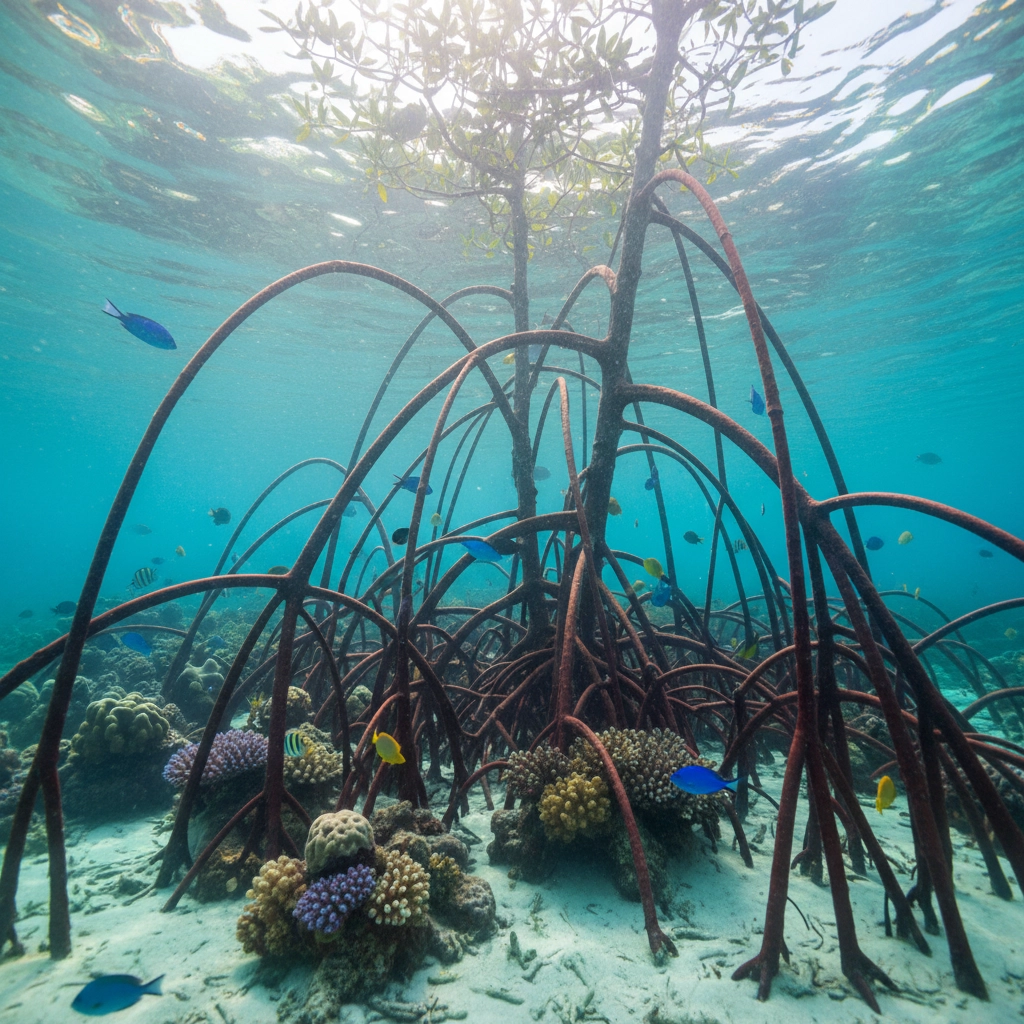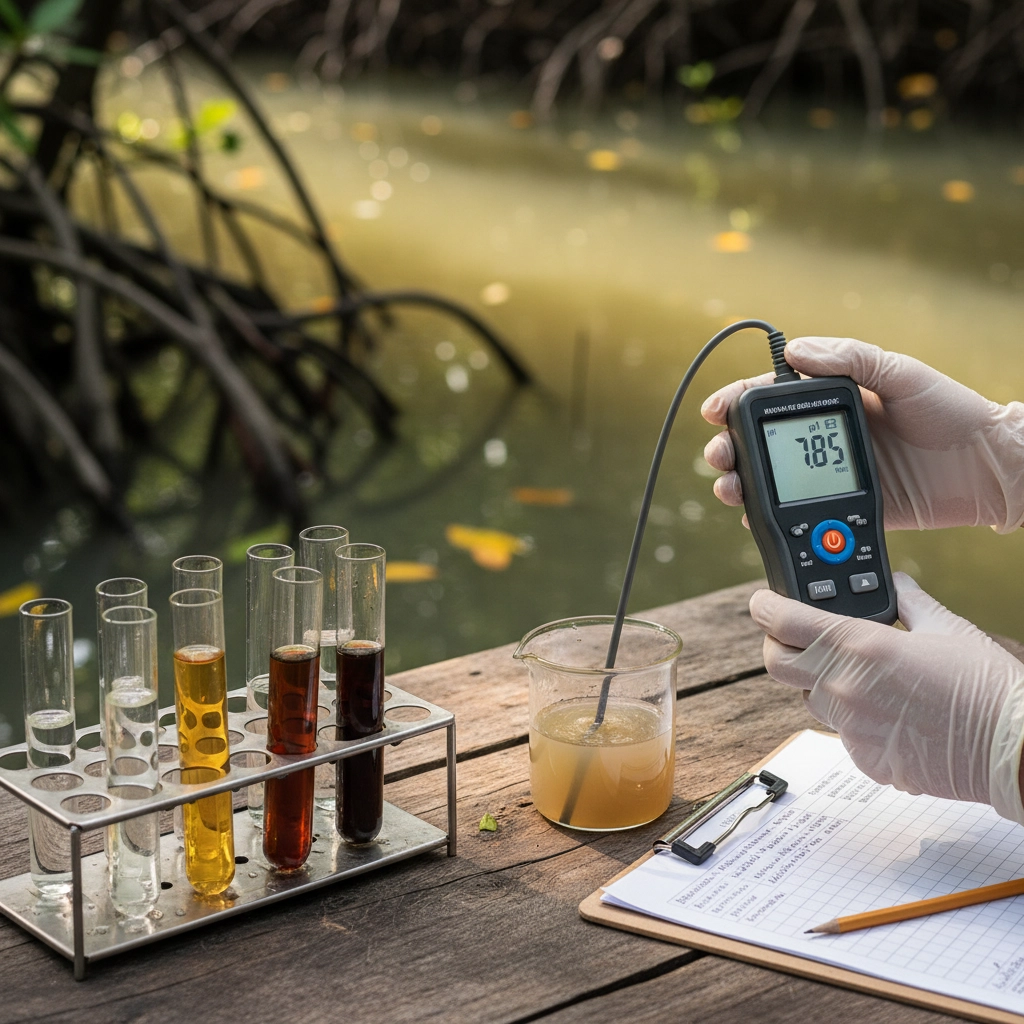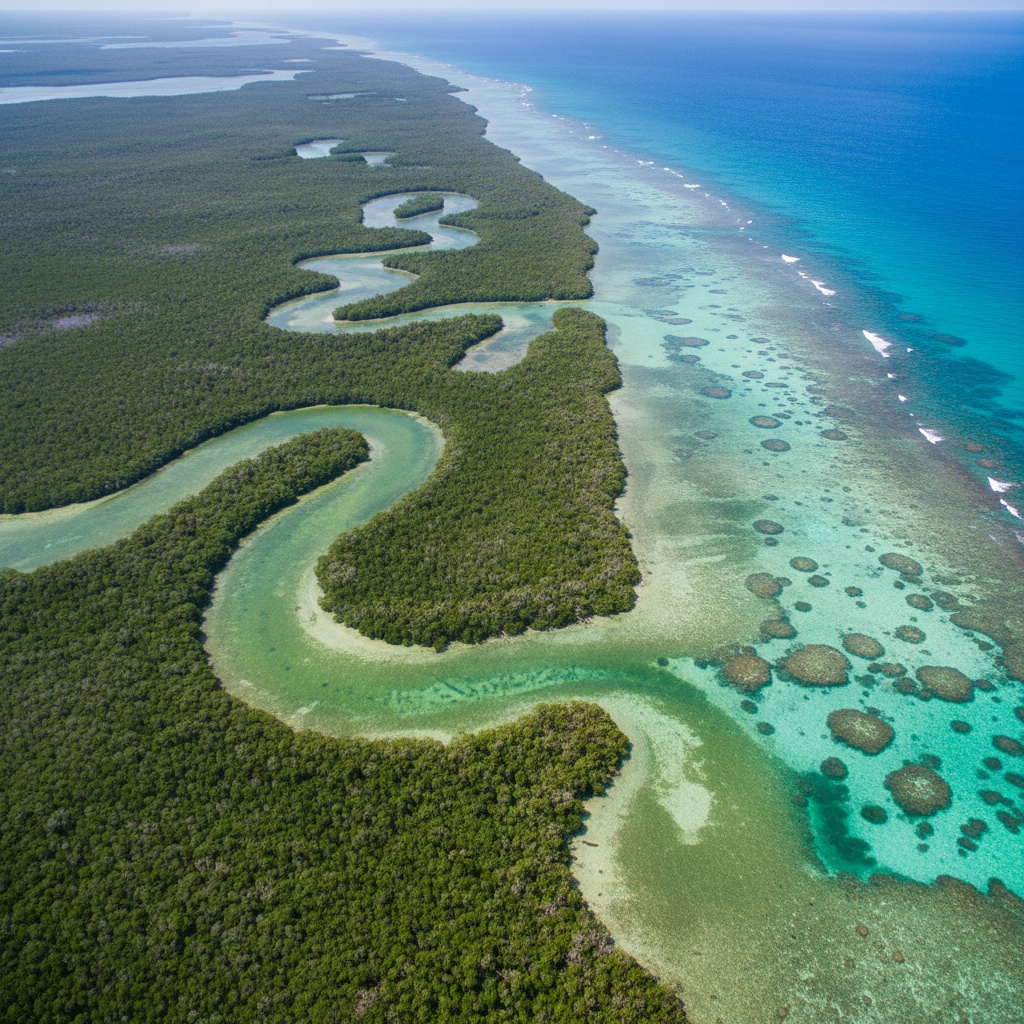Mangroves Matter: Discovering Florida Keys; Hidden Forests with Students
- Caleb Mullenix
- Oct 27
- 6 min read
Creating meaningful educational experiences for students requires accessing environments that function as living laboratories. The mangrove forests of the Florida Keys represent one of North America's most dynamic and accessible ecosystems for hands-on scientific learning. These remarkable coastal forests offer students direct engagement with complex ecological processes while developing critical thinking skills through field-based research and observation.
Understanding the significance of mangroves as educational resources begins with recognizing their role as keystone ecosystems. The Florida Keys contain approximately 600,000 acres of mangrove forest, lining more than 1,800 miles of shoreline within the Florida Keys National Marine Sanctuary. This extensive network creates unparalleled opportunities for students to study interconnected marine and terrestrial environments in a controlled, accessible setting.
The Science Behind Mangrove Ecosystems
Establishing a foundation in mangrove science enables students to comprehend the complexity of coastal ecology. Three distinct mangrove species dominate the Florida Keys: red mangroves (Rhizophora mangle), black mangroves (Avicennia germinans), and white mangroves (Laguncularia racemosa). Each species demonstrates unique adaptations to saltwater environments, providing concrete examples of evolutionary biology and plant physiology.
Red mangroves exhibit the most distinctive adaptations through their prop root systems. These aerial roots serve multiple functions: they provide structural stability in shifting sediments, supply oxygen to underground roots in anaerobic conditions, and filter salt from seawater before it reaches the plant's vascular system. Students can observe and measure these adaptations directly, documenting variations in root density, height, and distribution patterns.
Black mangroves demonstrate different salt tolerance mechanisms through specialized pneumatophores: vertical root projections that emerge from the sediment to facilitate gas exchange. These "breathing roots" create opportunities for students to investigate plant respiration in challenging environments and measure oxygen levels in waterlogged soils.

White mangroves, typically found in higher elevations within the mangrove zone, exhibit salt excretion through specialized leaf glands. Students can examine these salt crystals using hand lenses and conduct experiments to measure salinity variations across different mangrove zones.
Interactive Wildlife Surveying Activities
Conducting systematic wildlife surveys in mangrove environments teaches students scientific methodology while documenting biodiversity. Establish standardized survey protocols that enable students to collect meaningful data about mangrove inhabitants.
Begin wildlife surveys by creating observation stations at predetermined intervals along mangrove boardwalks or kayak routes. Assign student teams to specific zones, ensuring comprehensive coverage of different mangrove habitats. Provide field guides, binoculars, and data sheets to facilitate accurate species identification and population counts.
Document fish populations by conducting visual census surveys during different tidal states. Students can observe how fish communities change as water levels fluctuate, noting species composition in shallow root zones versus deeper channels. Record observations of juvenile fish species utilizing mangrove roots as nursery habitat, emphasizing the ecosystem's role in supporting commercial fisheries.
Survey bird populations by establishing morning and afternoon observation periods. Many wading birds, including great blue herons, reddish egrets, and white ibis, utilize mangrove environments for feeding and nesting. Students can document feeding behaviors, habitat preferences, and seasonal variations in species abundance.
Examine invertebrate communities by carefully inspecting mangrove root surfaces and sediment samples. Document barnacles, oysters, crabs, and other organisms that attach to or burrow within mangrove habitats. These organisms demonstrate adaptation strategies and reveal food web relationships that students can map and analyze.
Water Quality Analysis and Scientific Measurement
Integrating water quality assessment activities enables students to understand mangroves' environmental filtering functions while developing laboratory skills. Establish multiple sampling stations representing different zones within the mangrove ecosystem: open water approaches, dense root areas, and interior channels.
Measure fundamental water quality parameters including temperature, salinity, dissolved oxygen, pH, and turbidity. Use digital meters and testing kits to ensure accurate measurements while teaching proper calibration and data recording techniques. Compare measurements across different mangrove zones to demonstrate how these forests influence water chemistry.

Conduct turbidity measurements to illustrate mangroves' sediment filtration capabilities. Students can collect water samples from areas with varying mangrove density and measure suspended particle concentrations. These activities demonstrate how root systems trap sediments and improve water clarity: a critical factor for neighboring coral reef health.
Analyze nutrient levels, particularly nitrogen and phosphorus compounds, to understand mangroves' role in nutrient cycling. Higher nutrient concentrations in mangrove areas reflect decomposition processes and highlight these ecosystems' function as nutrient sources for adjacent marine environments.
Document salinity gradients from open ocean to interior mangrove channels. Students can observe how mangrove transpiration and freshwater inputs create complex salinity patterns that influence species distribution and ecosystem productivity.
Connecting Mangroves to Coral Reefs and Seagrass Beds
Demonstrate ecosystem connectivity by examining the relationships between mangroves, seagrass beds, and coral reefs. These three environments form an integrated coastal ecosystem where materials, energy, and organisms flow between habitats.
Investigate nutrient transfer between ecosystems by tracking organic matter movement. Mangroves produce significant quantities of detritus: decomposed leaf material that serves as a primary food source for many marine organisms. Students can collect leaf litter samples, measure decomposition rates, and follow the transport of organic materials to adjacent seagrass and reef environments.
Study fish migration patterns between habitats throughout different life stages. Many reef fish species, including parrotfish, snappers, and grunts, utilize mangrove nursery areas as juveniles before moving to adult reef habitats. Students can document size distributions and species compositions across different environments to understand habitat connectivity.

Examine water circulation patterns that connect these ecosystems. Tidal movements transport nutrients, larvae, and organic matter between mangroves and adjacent habitats. Students can deploy simple current meters or observe debris movement to document water flow patterns and their ecological significance.
Wildlife Encounters: Sharks, Sea Turtles, and Marine Life
Creating opportunities for direct wildlife encounters enhances student engagement while emphasizing conservation importance. The protected waters around mangrove environments provide ideal conditions for observing marine megafauna in their natural habitats.
Document sea turtle foraging behavior in seagrass beds adjacent to mangrove systems. Green sea turtles frequently graze on turtle grass and manatee grass in shallow areas near mangrove channels. Students can observe feeding patterns, photograph individual turtles for identification purposes, and record GPS coordinates for population monitoring efforts.
Observe juvenile shark populations in mangrove creek systems. Nurse sharks, blacktip sharks, and bonnethead sharks utilize shallow mangrove waters as nursery areas. These encounters provide opportunities to discuss shark ecology, dispel misconceptions, and emphasize the importance of protecting critical habitats.
Survey manatee populations in deeper mangrove channels during cooler months. West Indian manatees seek warm-water refuges in protected mangrove areas, offering students chances to observe these endangered marine mammals while learning about conservation challenges and success stories.
Hands-On Conservation Activities
Engage students in active conservation work through habitat restoration and monitoring projects. These activities provide tangible ways for students to contribute to ecosystem preservation while developing environmental stewardship values.
Participate in mangrove restoration efforts by planting red mangrove propagules in appropriate locations. Students can collect mature propagules, prepare planting sites, and monitor establishment success over time. These activities teach restoration ecology principles while providing direct conservation experience.

Conduct marine debris removal activities in mangrove areas while documenting pollution sources and impacts. Students can categorize debris types, record quantities, and analyze data to identify pollution trends and potential solutions.
Assist with long-term monitoring programs by collecting standardized data on mangrove health, wildlife populations, and environmental conditions. Partner with local research organizations to ensure student data contributes to ongoing scientific studies.
Educational Trip Planning Considerations
Planning effective mangrove education experiences requires careful attention to logistics, safety, and learning objectives. Begin preparation by establishing clear educational goals and aligning activities with curriculum standards in biology, environmental science, and earth science.
Coordinate with local marine science centers and research organizations to access specialized equipment and expertise. The Florida Keys offer numerous educational resources, including the Coral Restoration Foundation, Mote Marine Laboratory, and Florida Keys National Marine Sanctuary educational programs.
Schedule activities during optimal tidal conditions to maximize wildlife observation opportunities and ensure safe access to study sites. Spring tides provide the greatest tidal range, creating diverse habitat conditions within short time periods.
Ensure appropriate safety protocols for water-based activities, including life jacket requirements, emergency communication procedures, and weather monitoring systems. Establish clear boundaries for student exploration areas and maintain appropriate supervision ratios.
The mangrove forests of the Florida Keys provide unmatched opportunities for transformative educational experiences. Through systematic observation, scientific measurement, and direct ecosystem engagement, students develop deeper understanding of coastal ecology while building practical research skills. These hidden forests offer living laboratories where complex scientific concepts become tangible and meaningful, creating lasting impressions that inspire environmental awareness and scientific curiosity.
For educators seeking to maximize learning opportunities through immersive field experiences, Appleseed Expeditions specializes in creating comprehensive educational programs that transform classroom concepts into real-world understanding.



Comments